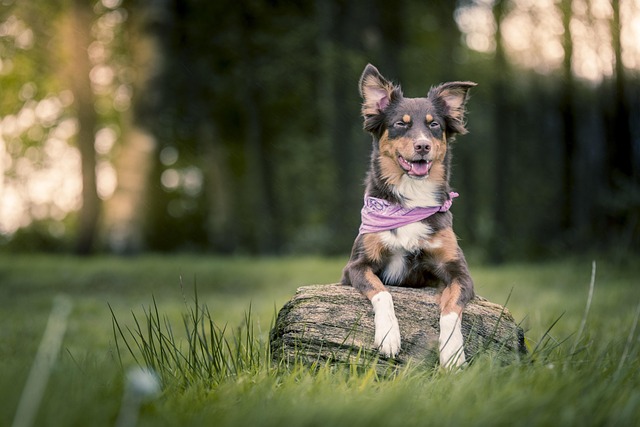
How to train a dog to bite back?
Training a dog to have defensive biting ability is not merely about releasing its attack instincts. Instead, it is based on a high level of trust between humans and dogs.
When the soft little paw pads step on your instep, the wet nose rubs against your palm, and those clear eyes are filled with dependence, the Labrador retriever bursts into your life with full enthusiasm. As one of the most popular dog breeds, Labradors are known for their intelligence, docility, and high obedience. However, these excellent traits are not innate—scientific basic training is the key to awakening their potential. Every patient teaching is not only the construction of trust between the owner and the Labrador but also the necessary path to making this cross-species companionship more beautiful.
Name recognition training is the starting point of all training. When a Labrador puppy arrives at a new home, it is full of curiosity and anxiety about the surrounding environment. At this time, the owner gently and firmly calls its name, combined with gentle strokes and delicious snack rewards, which can quickly establish a connection between the name and positive emotions. Just as a child instinctively responds when hearing their parents' call, when the Labrador realizes that "this sound means love and attention," it will actively turn its head and wag its tail toward the owner every time it hears its name. During training, you can call the name in different scenarios and distances—from the warm living room indoors to the tempting garden outdoors—gradually strengthening its sensitivity to the name and laying a solid foundation for subsequent training.
Heeling training is related to the safety and order of daily outings. Labradors are energetic and easily excited to rush around when going out, which may not only break free from the leash and fall into danger but also cause trouble for the owner. In the early stage of training, choose a quiet indoor environment, put on a comfortable leash for the Labrador, and the owner holds snacks and walks in front. When it follows closely, give timely rewards and praise; if it pulls the leash, stop immediately and continue walking until it calms down. As the training deepens, gradually increase interference factors, such as practicing in outdoor environments with many people and other animals, so that the Labrador can learn to keep pace with the owner in various situations. When the once-rampaging "crazy puppy" becomes a thoughtful partner who walks quietly alongside, the owner can enjoy the comfortable time of strolling the streets with it.

Sit-and-stay training is an important part of cultivating a Labrador's obedience. The "sit" training is relatively simple: the owner holds a snack above the Labrador's nose with one hand and moves it upward slowly. To eat the snack, the dog will raise its head, shift its body weight backward, and sit down naturally. At this moment, immediately give the "sit" command and provide a reward. After repeated practice, the Labrador can understand the meaning of the command. The "stay" training can be carried out on the basis of the "sit" command: the owner holds a snack and slowly moves it toward the ground in front of the dog's eyes while giving the "stay" command to guide it to lie down, and then gives a timely reward after the action is completed. Through sit-and-stay training, the Labrador can learn to quickly adjust its behavior when the owner gives a command, which can effectively ensure its safety in scenarios such as encountering danger or needing to wait quietly.
Designated potty training can keep the home environment clean and help the Labrador develop good living habits. Observe the Labrador's potty rules—generally, it will need to defecate within 15-30 minutes after eating or waking up. At this time, take it to the designated potty area, such as a corner with a urine pad, and wait quietly with soothing words. When it successfully defecates, immediately give a large number of rewards and praise to reinforce this correct behavior; if it defecates in the wrong place, do not scold or beat it—just clean it up silently to avoid leaving a psychological shadow due to fear. With the progress of training, the Labrador will gradually understand where the appropriate potty place is, reducing the owner's cleaning burden and making its life more orderly.
Forbidden behavior training can correct the Labrador's bad habits and ensure the safety of it and family members. Labradors are naturally curious and like to explore the world with their mouths, which may lead to biting furniture, wires, or even eating dangerous items by mistake. When it is found nibbling, immediately stop it with a serious tone, such as saying "no," and shift its attention to appropriate toys while praising it when giving the toys. For jumping-up behavior, when the Labrador excitedly jumps at people, the owner can turn around and ignore it, and interact with it again after it calms down. After repeated training, it will understand that jumping up cannot get attention and thus abandon this habit.
In the basic training of Labradors, the owner's patience and methods are crucial. Each Labrador has its own learning pace—some learn quickly, while others are relatively slow. However, regardless of progress, scolding and physical punishment should be avoided. Physical punishment will not only make the Labrador feel fear and resistance, damage mutual trust, but also affect its mental health. Using a positive reward mechanism, such as snacks, toys, and praise, to guide it to perform correct behaviors can make the training more effective. When watching the once-ignorant little guy grow into a well-behaved and obedient partner, all the hardships during training will turn into full-hearted sweetness and pride, and the Labrador will also repay the owner's love and dedication with a lifetime of loyalty and companionship.

Training a dog to have defensive biting ability is not merely about releasing its attack instincts. Instead, it is based on a high level of trust between humans and dogs.

When we watch dogs sniffing around with curiosity, their smart eyes flashing with the light of exploration, we will realize their innate instinct of exploration.

When your lovely Teddy suddenly bares its tiny teeth and nibbles at your fingers or clothes, or accidentally scratches your skin during play,

In the morning, sunlight filters through the window into the room as you carry a bowl of carefully prepared dog food toward the shepherd dog.

In the world of dogs, smell is their unique language for perceiving the outside world and a mysterious bridge for communicating with humans. Dogs' sense of smell is dozens or even hundreds of times more sensitive than that of humans.

When dogs explore the world with their teeth, furniture often becomes their "teething victims." This not only frustrates owners but also reveals the deeper needs behind their behavior.